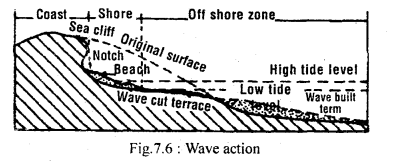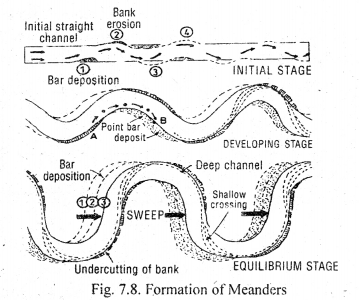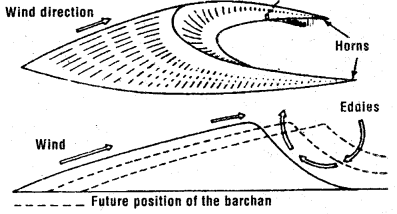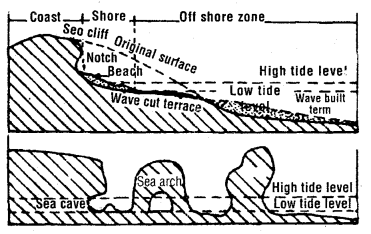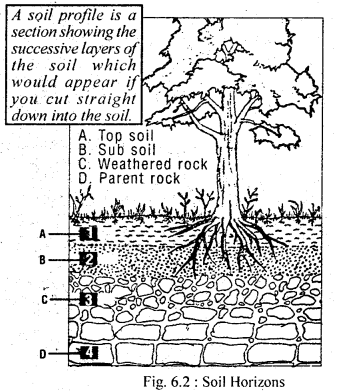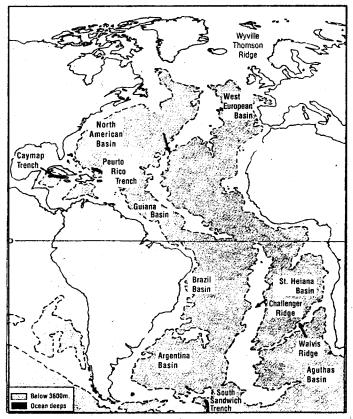Here we are providing Class 12 Hindi Important Extra Questions and Answers Aroh Chapter 13 काले मेघा पानी दे. Important Questions for Class 12 Hindi are the best resource for students which helps in class 12 board exams.
काले मेघा पानी दे Class 12 Important Extra Questions Hindi Aroh Chapter 13
प्रश्न 1.
‘काले मेघा पानी दे’ संस्मरण का मूल भाव स्पष्ट कीजिए।
अथवा
‘काले मेघा पानी दे’ पाठ का प्रतिपाद्य दीजिए।
अथवा
इंदर सेना के बारे में लेखक और जीजी की राय में क्या अंतर है? आप अन्य किसके विचारों से सहमत हैं? (A.L.C.B.S.E. 2016, Set-II, A.I. C.B.S.E. 2012, Set-III)
अथवा
‘काले मेघा पानी दे’ के आधार पर जीजी की दृष्टि में त्याग और दान को परिभाषित कीजिए। (C.B.S.E. 2018)
उत्तर
‘काले मेघा पानी दे’ संस्मरण धर्मवीर भारती द्वारा लिखित है। इसमें लेखक ने लोक आस्था और विज्ञान के द्वंद्व का सुंदर चित्रण किया है। विज्ञान का अपना तर्क है और विश्वास की अपनी सामर्थ्य। लेखक ने किशोर जीवन के इस संस्मरण में दिखलाया है कि अनावृष्टि से मुक्ति पाने हेतु गाँव के बच्चों की इंदर सेना द्वार-द्वार पानी माँगने जाती है। लेखक का तर्कशील किशोर-मन भीषण सूखे में उसे पानी की निर्मम बर्बादी समझता है।
लेखक की जीजी इस कार्य को अंधविश्वास न मानकर लोक आस्था के त्याग की भावना कहती है। लेखक बार-बार अपनी जीजी के तर्कों का खंडन करता हुआ इसे पाखंड और अंधविश्वास कहता है लेकिन जीजी की संतुष्टि और अपने सद्भाव को बचाए रखने के लिए वह तमाम रीति-रिवाजों को ऊपरी तौर पर सही मानता है। लेकिन अंतर्मन से उनका खंडन करता चलता है।
जीजी का मानना है कि परम आवश्यक वस्तु का त्याग ही सर्वोच्च दान है पाठ के अंत में लेखक ने देशभक्ति का परिचय देते हुए देश में फैले भ्रष्टाचार के प्रति गहन चिंता व्यक्त की है तथा उन लोगों के प्रति कटाक्ष किया है जो आज भी पश्चिमी संस्कृति और भाषा के अधीन हैं तथा भ्रष्टाचार को अनदेखा कर रहे हैं या उसमें लिप्त हैं।
प्रश्न 2.
प्रस्तुत संस्मरण के आधार पर लेखक की देशभक्ति की भावना का चित्रण कीजिए।
उत्तर
‘काले मेघा पानी दे’ संस्मरण में जहाँ लेखक ने लोक-आस्था का चित्रण किया है वहीं उनकी देशभक्ति की भावना भी दृष्टिगोचर होती है। लेखक का मानना है कि आज भी हम पूर्णतः आज़ाद नहीं हुए हैं क्योंकि इतने वर्षों की गुलामी के बाद भी हम अंग्रेजों के रहन-सहन, भाषा तथा पश्चिमी संस्कृति और सभ्यता के गुलाम हैं। आज भी उसे ही अपनाए हुए हैं। हम अपनी भारतीय संस्कृति को भूल रहे हैं तथा पश्चिमी संस्कृति को अपना रहे हैं। लेखक के विचार अधिक सशक्त और मानने योग्य हैं।
प्रश्न 3.
लेखक ने जिस त्याग-भावना को चित्रित किया है उसे स्पष्ट कीजिए।
अथवा
“माँगें हर क्षेत्र में बड़ी-बड़ी हैं, पर त्याग का कहीं नामोनिशान नहीं है।” “काले मेघा पानी दे’ कहानी की इस टिप्पणी पर आज के संदर्भ में टिप्पणी कीजिए। (C.B.S.E. Delhi 2017, Set-I)
उत्तर
लेखक ने अपने देश के प्रति देशवासियों की त्याग-भावना का चित्रण किया है। उन्होंने बताया है कि आज हम भारतवासी स्वार्थी बन गए हैं हमें अपने स्वार्थों के अलावा कुछ भी दिखाई नहीं देता। हमारी प्रत्येक क्षेत्र में माँगे तो बहुत हैं लेकिन हमारे में त्याग-भावना का कहीं नामोनिशान बिल्कुल नहीं है। हर कोई अपनी मांग तो रखता है लेकिन देश के प्रति उसका क्या उत्तरदायित्व है इसको नहीं समझता।
प्रश्न 4.
‘काले मेघा पानी दे’ में लेखक ने समाज की एक ऐसी समस्या का वर्णन किया है जो आज भारत देश की भयंकर समस्या है। वह कौन-सी समस्या है? उसके विषय में हम कितने चिंतित हैं ? बताइए।
उत्तर
‘काले मेघा पानी दे’ संस्मरण में लेखक धर्मवीर भारती ने भ्रष्टाचार की भयंकर समस्या का चित्रण किया है जो आज संपूर्ण भारत की भयंकर समस्या है। यह समस्या भारतवर्ष को दीमक की तरह खा रही है। हम सब इस भयंकर समस्या के बारे में केवल बातें करते हैं लेकिन उसकी जाँच कभी नहीं करते कि उसका मूल कारण क्या है? कहीं किसी दायरे में हम ही तो उसी के अंग तो नहीं बन रहे। ऐसा कोई चिंतन नहीं करता और न ही कोई पहल करना चाहता है। केवल अनदेखा कर छोड़ देते हैं।
प्रश्न 5.
सरकार द्वारा करोड़ों-अरबों की योजनाएं बनाई जाती हैं लेकिन उनका लाभांश जनसामान्य तक क्यों नहीं पहुंच पाता?
उत्तर
सरकार प्रतिवर्ष करोड़ों-अरबों की योजनाएँ बनाती है लेकिन उनका लाभांश जनसामान्य तक इसलिए नहीं पहुंच पाता क्योंकि वहउन तक आते-आते भ्रष्टाचार की भेंट चढ़ जाता है। ऊँची गद्दी पर बैठे राजनेता, अफ़सर उसे केवल फर्जी कागजी कारवाई करके हजम कर जाते हैं।
प्रश्न 6.
‘काले मेघा पानी दे’ में चित्रित लोक-आस्था पर टिप्पणी कीजिए।
उत्तर
भारतीय संस्कृति में लोक-आस्था का महत्वपूर्ण स्थान है। प्रस्तुत पाठ में लेखक ने अनावृष्टि से बचने के लिए लोक-आस्था का चित्रण किया है जिसमें गाँव के बच्चे वर्षा न होने पर तथा चारों ओर सूखा पड़ जाने पर एक इंदर सेना बनाकर गाँव के प्रत्येक घर में पानी माँगते फिरते हैं। वे ऐसा इसलिए करते हैं ताकि उनकी इस प्रक्रिया से इंदर महाराज खुश होकर वर्षा ले आएँ। गाँव के लोग पानी की कमी होने पर भी उस इंदर सेना पर पानी डालते हैं। वे लोग इस पानी को देवताओं को अर्घ्य चढ़ाना समझते हैं। त्याग करना सोचते हैं कि अभाव में त्याग करके फल शीघ्र मिलता है। यही धारणा मन में बसाकर वे ऐसा करते हैं।
प्रश्न 7.
जेठ की गर्मी में गाँव और शहरों की दशा का वर्णन करें।
उत्तर
जेठ मास में गांव और शहर के लोग गर्मी के कारण त्राहिमाम करने लगते थे। कुएं सूखने लगते थे। नलों में बहुत कम और गर्म पानी आता था। शहरों की तुलना में गाँवों की स्थिति बहुत खराब थी। कृषि योग्य भूमि सूखकर पत्थर हो जाती थी। जमीन फटने लगती थी। आदमी चलते-चलते लू खाकर गिर पड़ते थे। पशु-पक्षी प्यासे मरने लगे थे।
प्रश्न 8.
गाँव में क्या अंधविश्वास था?
उत्तर
जेठ मास में जब चारों तरफ पानी का नामोनिशान भी नहीं दिखाई पड़ता था तब गाँव के लोग मेहनत से इकट्ठा किया हुआ पानी इंदर सेना पर बाल्टी भर-भर कर फेंकते थे। उनका मानना था कि ऐसा करने से इंद्र देवता प्रसन्न होकर वर्षा करवाएँगे।
प्रश्न 9.
इस तरह के अंधविश्वासों से क्या-क्या हानियाँ हो सकती हैं?
उत्तर
इस तरह के अंधविश्वासों से निम्नांकिन हानियाँ हो सकती हैं
(1) पानी की बर्बादी होती है।
(2) मानसिक संकीर्णता बढ़ती है।
(3) अकर्मण्यता बढ़ सकती है।
प्रश्न 10.
जीजी ने लेखक को इंदर सेना पर पानी फेंकने को सही ठहराने के रूप में क्या तर्क दिया?
उत्तर
जीजी ने लेखक को इंदर सेना पर पानी फेंकने के पीछे यह तर्क दिया कि यह पानी का अर्घ्य चढ़ाया जाता है जो चीज मनुष्य पाना चाहता है उसे पहले देना पड़ता है, इसीलिए ऋषि-मुनियों ने दान को सबसे ऊंचा स्थान दिया है।
प्रश्न 11.
त्याग की परिभाषा लिखिए।
उत्तर
त्याग वह होता है जो चीज कम मात्रा होने पर भी और उसकी जरूरत होने पर, परंतु अपनी जरूरत पीछे रखकर हम उसे दूसरों के कल्याण के लिए दे दें। यही सच्चा दान होता है और इसी का फल मिलता है।
प्रश्न 12.
‘यथा राजा तथा प्रजा’ को स्पष्ट कीजिए।
उत्तर
इसका तात्पर्य यह है कि जैसा राजा हो वैसी ही प्रजा होती है। राजा का स्वभाव, रहन-सहन, कर्म, हाव-भाव, चाल-चलन जैसा होता है उसके राज्य की प्रजा का स्वभाव, रहन-सहन, कर्म, हाव-भाव, चाल-चलन उसी के अनुरूप बदल जाता है। अत: यह सच है कि यथा राजा तथा प्रजा।
प्रश्न 13.
‘काले मेघा पानी दे’ पाठ में पानी की बर्बादी होने और बर्बादी न होने संबंधी दोनों तर्कों पर टिप्पणी कीजिए। (C.B.S.E. Outside Delhi 2017 Set-III)
उत्तर
‘काले मेघा पानी दे’ पाठ में पानी की बर्बादी होने को लेखक ने सही ठहराया है। यही सही है कि इस प्रकार की लोकमान्यताओं से देश की अमूल्य संपत्ति पानी की बर्बादी हो रही है। जो उचित नहीं है। यह देश की अमूल्य धरोहर है जिसे बचाकर रखना चाहिए। दूसरा पानी की बर्बादी न होने को जीजी सही मानती हैं जो उचित नहीं है क्योंकि ऐसी आस्था से केवल भ्रम, अंधविश्वास ही पनप सकता है। धर्म के प्रति आस्था ठीक है किंतु उस आस्था के नाम पर अमूल्य वस्तु का बर्बाद करना औचित्यपूर्ण नहीं।
महत्वपूर्ण गद्यांशों के अर्थग्रहण संबंधी प्रश्नोत्तर
1. उन लोगों के दो नाम थे-इंदर-सेना या मेंढक-मंडली। बिल्कुल एक-दूसरे के विपरीत। जो लोग उनके नग्न स्वरूप शरीर, उनकी उछलकूद, उनके शोर-शराबे और उनके कारण गली में होने वाले कीचड़ काँदो से चिढ़ते थे, वे उन्हें कहते थे मेंढक-मंडली। उनकी अगवानी गलियों से होती थी। वे होते थे दस-बारह बरस से सोलह-अठारह बरस के लड़के, साँवला नंगा बदन सिर्फ एक जाँघिया या कभी-कभी सिर्फ लंगोटी। एक जगह इकट्ठे होते थे। पहला जयकारा लगता था, “बोल गंगा मैया की जय।” जयकारा सुनते ही लोग सावधान हो जाते थे। स्त्रियाँ और लड़कियाँ छजे, बोरजे से झाँकने लगती थीं और यह विचित्र नंग-धडंग टोली उछलती-कदती समवेत पुकार लगाती थी।
अर्थग्रहण संबंधी प्रश्नोत्तर
प्रश्न
1. गाँव से पानी माँगने वाले बच्चों के कितने नाम थे ? नाम बताएँ।
2. मेंढक-मंडली से क्या अभिप्राय है?
3. मेंढक-मंडली की अगवानी कहाँ से होती थी?
4. मेंढक-मंडली में कैसे-कैसे बच्चे होते थे?
5. उपर्युक्त गद्यांश के लेखक तथा पाठ का नाम लिखिए।
उत्तर
1. गाँव से पानी माँगने वाले बच्चों के दो नाम थे-इंदर-सेना और मेंढक-मंडली।
2. मेंढकों की तरह उछल-कूद, शोर-शराबा और कीचड़ करने वाले बच्चों की मंडली को नापसंद करने वाले मेंढक-मंडली कहते थे।
3. मेंढक-मंडली की अगवानी गलियों से होती थी।
4. मेंढक-मंडली में दस-बारह वर्ष से लेकर सोलह-अठारह बरस तक के बच्चे होते थे। उनका रंग साँवला, नंगा बदन, जाँघिया या लंगोटी पहनावा होता था।
5. उपर्युक्त गद्यांश के लेखक का नाम धर्मवीर भारती तथा पाठ का नाम ‘काले मेघा पानी दे’ है।
2. वे सचमुच ऐसे दिन होते जब गली-मुहल्ला, गाँव-शहर हर जगह लोग गरमी में भुन-भुन कर त्राहिमाम कर रहे होते, जेठ के दसतपा बीत कर आषाढ़ का पहला पखवारा भी बीत चुका होता पर क्षितिज पर कहीं बादल की रेख भी नहीं दीखती होती, कुएँ सूखने लगते, नलों में एक तो बहुत कम पानी आता और आता भी तो आधी रात को भी मानो खौलता हुआ पानी हो। शहरों की तुलना में गाँव में और भी हालत ख़राब होती थी।
अर्थग्रहण संबंधी प्रश्नोत्तर
प्रश्न
1. इस गद्यांश के लेखक तथा पाठ का नाम बताओ।
2. इस गद्यांश में लेखक किन दिनों की बात करता है?
3. जेठ तथा आषाढ़ के मास में वायुमंडल की दशा कैसी होती थी?
4. जेठ मास की भयंकर गर्मी के कारण गाँवों की कैसी दुर्दशा होती थी?
उत्तर
1. इस गद्यांश के लेखक का नाम धर्मवीर भारती है तथा पाठ का नाम ‘काले मेघा पानी दे’ है।
2. इस गद्यांश में लेखक जेठ मास के अंतिम तथा आषाढ़ के शुरू के दिनों की बात करता है।
3. जेठ तथा आषाढ़ मास में क्षितिज पर कहीं भी बादलों की रेखा भी दिखाई नहीं देती थी। भयंकर गर्मी के कारण कुएँ सूखने लगते थे। नलों में पानी बहुत कम आता था।
4. जेठ मास की भयंकर गर्मी के कारण गाँवों की हालत बहुत खराब हो जाती थी। जुताई योग्य भूमि सूखकर नष्ट हो जाती थी। पपड़ी जमने से जमीन फटने लगती थी। लू के कारण आदमी रास्तों में चलते-चलते गिर पड़ते थे। गाय, भैंस, बकरी आदि पशु प्यास के कारण मरने लगते थे।
3. देश की कितनी क्षति होती है इस तरह के अंधविश्वासों से। कौन कहता है इन्हें इंद्र की सेना? अगर इंद्र महाराज से ये पानी दिलवा सकते हैं तो खुद अपने लिए पानी क्यों नहीं माँग लेते? क्यों मुहल्ले-भर का पानी नष्ट करवाते घूमते हैं, नहीं यह सब पाखंड है, अंधविश्वास है। ऐसे ही अंधविश्वासों के कारण हम अंग्रेजों से पिछड़ गए और गुलाम बन गए।
अर्थग्रहण संबंधी प्रश्नोत्तर
प्रश्न
1. देश की किस तरह के अंधविश्वासों से क्षति होती है?
2. ‘कौन कहता है इन्हें इंद्र की सेना?’ यह कहकर लेखक किन पर व्यंग्य करता है?
3. इंद्र सेना पर लेखक क्या व्यंग्य करता है?
4. हम भारतवासी अंग्रेजों से क्यों पिछड़ गए?
5. इस गदयांश के लेखक का क्या नाम है?
उत्तर
1. वर्षा न होने से पानी की कमी होने पर भी गाँव के बच्चों द्वारा मंडली बनाकर घर-घर से पानी इकट्ठा करके गलियों में बर्बाद करने जैसे अंधविश्वासों से देश को क्षति होती है।
2. ‘कौन कहता है इन्हें इंद्र की सेना’ यह कहकर लेखक इंद्र सेना और मेंढक-मंडली पर व्यंग्य करता है।
3. इंद्र-सेना पर लेखक यह व्यंग्य करता है कि अगर इंद्र महाराज से ये पानी दिलवा सकते तो खुद अपने लिए पानी क्यों नहीं लेते? वे मुहल्ले का पानी नष्ट करवाते हुए क्यों घूमते हैं।
4. भारतवर्ष में अनेक अंधविश्वास मौजूद हैं, जैसे-वर्षा न होने पर पानी की कमी होने पर भी घर-घर के पानी को नष्ट करना। ऐसे अंधविश्वासों के कारण ही हम भारतवासी अंग्रेजों से पिछड़ गए।
5. इस गद्यांश के लेखक का नाम धर्मवीर भारती है।
4. “यह सब अंधविश्वास नहीं है। हम इन्हें पानी नहीं देंगे तो इंद्र भगवान हमें पानी कैसे देंगे ?” मैं कुछ नहीं बोला। फिर जीजी बोलीं।
“तू इसे पानी की बरबादी समझता है पर यह बरबादी नहीं है। यह पानी का अर्घ्य चढ़ाते हैं, जो चीज़ मनुष्य पाना चाहता है उसे पहले देगा नहीं तो पाएगा कैसे ? इसलिए ऋषि-मुनियों ने दान को सबसे ऊँचा स्थान दिया है।”
अर्थग्रहण संबंधी प्रश्नोत्तर प्रश्न
1. ‘यह सब अंधविश्वास नहीं है। हम इन्हें पानी नहीं देंगे तो इंद्र भगवान हमें पानी कैसे देंगे, यह बात कौन किसको कहता है?
2. लेखक इंद्र-सेना पानी देना क्या समझता है?
3. जीजी ने लेखक द्वारा पानी की बर्बादी करने पर क्या तर्क दिया?
4. ऋषि-मुनियों ने सबसे ऊँचा स्थान किसको दिया है?
उत्तर
1. यह बात जीजी लेखक को कहती है।
2. लेखक इंद्र-सेना को पानी देना, पानी की बर्बादी समझता है।
3. जीजी ने लेखक द्वारा पानी की बर्बादी कहने पर यह तर्क दिया कि तू इसे पानी की बर्बादी समझता है पर यह बर्बादी नहीं है। हम यह पानी का अर्घ्य चढ़ाते हैं क्योंकि जो चीज़ मनुष्य पाना चाहता है उसे पहले देगा नहीं तो उसे कैसे पाएगा?
4. ऋषि-मुनियों ने सबसे ऊँचा स्थान दान को दिया है।
5. कुछ देर चुप रही जीजी, फिर मठरी मेरे मुंह में डालती हुई बोली, “देख बिना त्याग के दान नहीं होता। अगर तेरे पास लाखों-करोड़ों रुपए हैं और उसमें से तू दो-चार रुपये किसी को दे दे तो यह क्या त्याग हुआ। त्याग तो वह होता है कि जो चीज़ तेरे पास भी कम __है, जिसकी तुझको भी जरूरत है तो अपनी ज़रूरत पीछे रखकर दूसरे के कल्याण के लिए उसे दे तो त्याग तो वह होता है, दान तो वह होता है, उसी का फल मिलता है।”
अर्थग्रहण संबंधी प्रश्नोत्तर
प्रश्न
1. दान के लिए किस भावना का होना आवश्यक है?
2. जीजी ने लेखक को त्याग का क्या अर्थ समझाया?
3. दान क्या होता है?
4. किस दान का फल मिलता है?
5. उपर्युक्त गद्यांश के लेखक और पाठ का नाम बताएँ।
उत्तर
1. दान के लिए त्याग की भावना का होना आवश्यक है।
2. जीजी ने लेखक को त्याग का अर्थ समझाया कि लाखों-करोड़ों रुपये में से दो-चार रुपये देना त्याग नहीं होता, बल्कि त्याग तो वह होता – है कि जो चीज़ तेरे पास भी कम है और जिसकी तुझे भी ज़रूरत है तो अपनी जरूरत छोड़कर दूसरे के कल्याण के लिए उसे दे देना ही त्याग होता है।
3. अपनी कम वस्तु में से अपनी जरूरत को अनदेखा करते हुए किसी को दे देना दान होता है।
4. जो दान त्याग की भावना से किया जाए यानी अपने पास चीज़ कम होते हुए भी अपनी ज़रूरत को अनदेखा करते हुए दूसरों के कल्याण के लिए जो दान दिया जाता है, उसी दान का फल मिलता है।
5. उपर्युक्त गद्यांश के लेखक ‘धर्मवीर भारती’ तथा पाठ का नाम ‘काले मेघा पानी दे’ है।
6. “देख तू तो अभी से पढ़-लिख गया है। मैंने तो गाँव के मदरसे का भी मुँह नहीं देखा। पर एक बात देखी है कि अगर तीस-चालीस मन गेहूँ उगाना है तो किसान पाँच-छह सेर अच्छा गेहूँ अपने पास से लेकर जमीन में क्यारियाँ बनाकर फेंक देता है। उसे बुवाई कहते हैं। यह जो सूखे में हम अपने घर का पानी इन पर फेंकते हैं वह भी बुवाई है। यह पानी गली में बोएँगे तो सारे शहर, कस्बा, गाँव पर पानीवाले बादलों की फ़सल आ जाएगी। हम बीज बनाकर पानी देते हैं, फिर काले मेघा से पानी माँगते हैं। सब ऋषि-मुनि कह गए हैं कि पहले खुद दो तब देवता तुम्हें चौगुना-अठगुना करके लौटाएँगे भइया, यह तो हर आदमी का आचरण है, जिससे सबका आचरण बनता है। यथा राजा तथा प्रजा सिर्फ यही सच नहीं है। सच यह भी है कि यथा प्रजा तथा राजा। यही तो गांधी जी महाराज कहते हैं।” (C.B.S.E. Outside Delhi 2013 Set-I, II, III) (अर्थग्रहण संबंधी प्रश्नोत्तर
प्रश्न
1. उपर्युक्त गद्यांश का पाठ तथा लेखक का नाम बताएँ।
2. बुवाई किसे कहते हैं?
3. ‘देख तू तो अभी से पढ़-लिख गया है। मैंने तो गाँव के मदरसे का भी मुँह नहीं देखा।’ यह बात कौन कहता है और किससे?
4. ऋषि-मुनि क्या बात कह गए हैं? 5. जीजी लेखक को बुवाई के संबंध में क्या तर्क देती है?
उत्तर
1. इस गद्यांश के लेखक धर्मवीर भारती तथा पाठ का नाम है ‘काले मेघा पानी दे’।
2. किसान अपनी फसल उगाने के लिए अपने खेत में अपने पास से कुछ अच्छा बौज लेकर खेत में डालता है ताकि उससे अच्छी फसल पैदा हो सके। किसान द्वारा खेत में बीज डालने को ही बुवाई कहते हैं।
3. यह बात जीजी, लेखक को कहती है।
4. ऋषि-मुनि यह बात कह गए हैं कि पहले हमें खुद देना चाहिए तभी देवता हमें चौगुना या अठगुना करके लौटाते हैं।
5. जीजी, लेखक को कहती है कि किसान अपने खेत में बीज बोता है केवल वही बुवाई नहीं है बल्कि जो सूखे में हम अपने घर का पानी इंद्र-सेना पर फेंकते हैं वह भी बुवाई है। हम यह पानी गली में बोएँगे तो सारे शहर, कस्बा, गाँव पर पानी वाले बादलों की फसल आ जाएगी। हम बीज रूप में पानी देकर काली मेघा से फसल के रूप में पानी माँगते हैं। सब ऋषि भी ऐसा ही कह गए हैं कि पहले खुद दो फिर तुम्हें मिलेगा।
7. अंग्रेज़ चले गए पर क्या हम आज भी सच्चे अर्थों में आजाद हो पाए। क्या उनकी रहन-सहन, उनकी भाषा, उनकी संस्कृति से आजाद होकर अपने देश के संस्कारों को समझ पाए? हम आज देश के लिए करते क्या हैं ? माँगें हर क्षेत्र में बड़ी-बड़ी हैं पर त्याग का कहीं नाम-निशान नहीं है। अपना स्वार्थ आज एकमात्र लक्ष्य रह गया है।
अर्थग्रहण संबंधी प्रश्नोत्तर
प्रश्न
1. हम आज भी सच्चे अर्थों में आजाद क्यों नहीं हो पाए?
2. हम सच्चे अर्थों में आजाद कब होंगे?
3. आज हमारा क्या लक्ष्य है?
4. हमें देश के लिए क्या करना चाहिए?
5. हमारी माँगें बड़ी-बड़ी क्यों हैं?
उत्तर
1. हम आज भी सच्चे अर्थों में आजाद इसलिए नहीं हो पाए, क्योंकि हम आज भी अंग्रेजों के रहन-सहन, उनकी भाषा, संस्कार तथा संस्कृति को अपना रहे हैं।
2. हम सच्चे अर्थों में आजाद तब होंगे जब हम पूर्ण रूप से अपने देश के रहन-सहन, भाषा, संस्कार तथा संस्कृति को अपना लेंगे।
3. आज हमारा लक्ष्य स्वार्थ की पूर्ति है।
4. हमें अपने देश की एकता, अखंडता एवं संप्रभुता के लिए अपना सब कुछ न्योछावर कर देना चाहिए।
5. हमारी मांगे इसलिए बड़ी-बड़ी हैं क्योंकि हमारे अंदर त्याग की भावना नहीं है। हम केवल अपना स्वार्थ सिद्ध करना चाहते हैं। अपने
देश के लिए कुछ भी करना नहीं चाहते।
8. हम आज देश के लिए करते क्या हैं? माँगें हर क्षेत्र में बड़ी-बड़ी हैं, पर त्याग का कहीं नामो-निशान नहीं है। अपना स्वार्थ आज एकमात्र लक्ष्य रह गया है। चटखारे लेकर हम चटखारे लेकर इसके या उसके भ्रष्टाचार की बातें करते हैं पर क्या कभी हमने जाँचा है कि अपने स्तर पर अपने दायरे में हम उसी भ्रष्टाचार के अंग तो नहीं बन रहे हैं? यही कारण है कि रोज हम पढ़ते हैं कि यह हजार करोड़ की योजना बनी, वह चार हजार करोड़ की योजना बनी, पर यह अरबों-खरबों की राशि कहाँ गुम हो जाती है ? काले मेघा दल के दल उमड़ते हैं, पानी झमाझम बरसता है, पर गगरी फूटी की फूटी रह जाती है, बैल पियासे के पियासे रह जाते हैं ? आखिर कब बदलेगी यह स्थिति? (Delhi C.B.S.E. 2016)
अर्थग्रहण संबंधी प्रश्नोत्तर
प्रश्न
1. हम चटखारे लेकर क्या बात करते हैं?
2. लेखक क्या जाँचने का संकेत करता है?
3. भ्रष्टाचार को कैसे रोका जा सकता है?
4. देश में करोड़ों-अरबों की राशि तथा योजनाएँ कहाँ गुम हो जाती हैं?
5. देश में प्रतिवर्ष करोड़ों-अरबों की योजनाएँ सामान्य जनता तक क्यों नहीं पहुँच पातीं?
6. लेखक को क्यों लगता है कि आज हम देश के लिए कुछ नहीं करते?
7. भ्रष्टाचार को लेकर व्यवहार में क्या विसंगति है?
8. सुविधाओं की बरसात से भी गरीब को कोई लाभ नहीं मिलता, इस बात को लेखक ने कैसे कहा है? स्पष्ट कीजिए।
9. ‘आखिर कब बदलेगी यह स्थिति?’ इस प्रश्न का आप क्या उत्तर देंगे? तर्क सहित समझाइए।
उत्तर
1. हम चटखारे लेकर इसके या उसके अर्थात दूसरों के भ्रष्टाचार की बात करते हैं।
2. लेखक यह जानने का संकेत करता है कि हम दूसरों के तो भ्रष्टाचार की बातें करते हैं लेकिन कभी अपने आपको जाँचने की कोशिश नहीं करते कि कहीं हम उसी भ्रष्टाचार के अंग तो नहीं बन रहे।
3. देश का प्रत्येक मनुष्य यदि अपने कर्तव्यपालन पूरी ईमानदारी एवं निष्ठा के साथ करे और यह दृढ़ निश्चय कर ले कि न हम कोई रिश्वत लेंगे और नहीं देंगे तो भ्रष्टाचार को खत्म किया जा सकता है।
4. देश में करोड़ों, अरबों की राशि तथा योजनाएँ भ्रष्टाचार की भेंट चढ़ जाती हैं।
5. देश में प्रतिवर्ष करोड़ों-अरबों की योजनाएँ सामान्य जनता तक इसलिए नहीं पहुंच पार्ती क्योंकि ये योजनाएँ जनता तक पहुंचने से पहले ही भ्रष्ट अधिकारियों के भ्रष्टाचार का शिकार हो जाती हैं। भ्रष्टाचारी सारे पैसे पहले ही हजम कर जाते हैं और सामान्य जनता ऐसी ही रह जाती है।
6. लेखक को ऐसा इसलिए लगता है क्योंकि हम सब देशवासी अपनी मांगे पूर्ण करना चाहते हैं परंतु त्याग कोई नहीं करते। अपना स्वार्थ एकमात्र लक्ष्य बनकर रह गया है।
7. हम भ्रष्टाचार की बड़ी-बड़ी बातें तो अवश्य करते हैं किंतु हम स्वयं भ्रष्टाचार का अंग बने रहते हैं।
8. लेखक के अनुसार सरकार जनसामान्य के लिए सुख-सुविधाएँ जुटाती हैं किंतु भ्रष्ट अधिकारी सब कुछ हड़प लेते हैं।
9. जब समाज से, देश से भ्रष्टाचार पूरी तरह समाप्त हो जाएगा। हम सब अपने देश से प्रेम करने लगेंगे। अपना स्वार्थ छोड़ देंगे। तब स्थिति बदल जाएगी।
